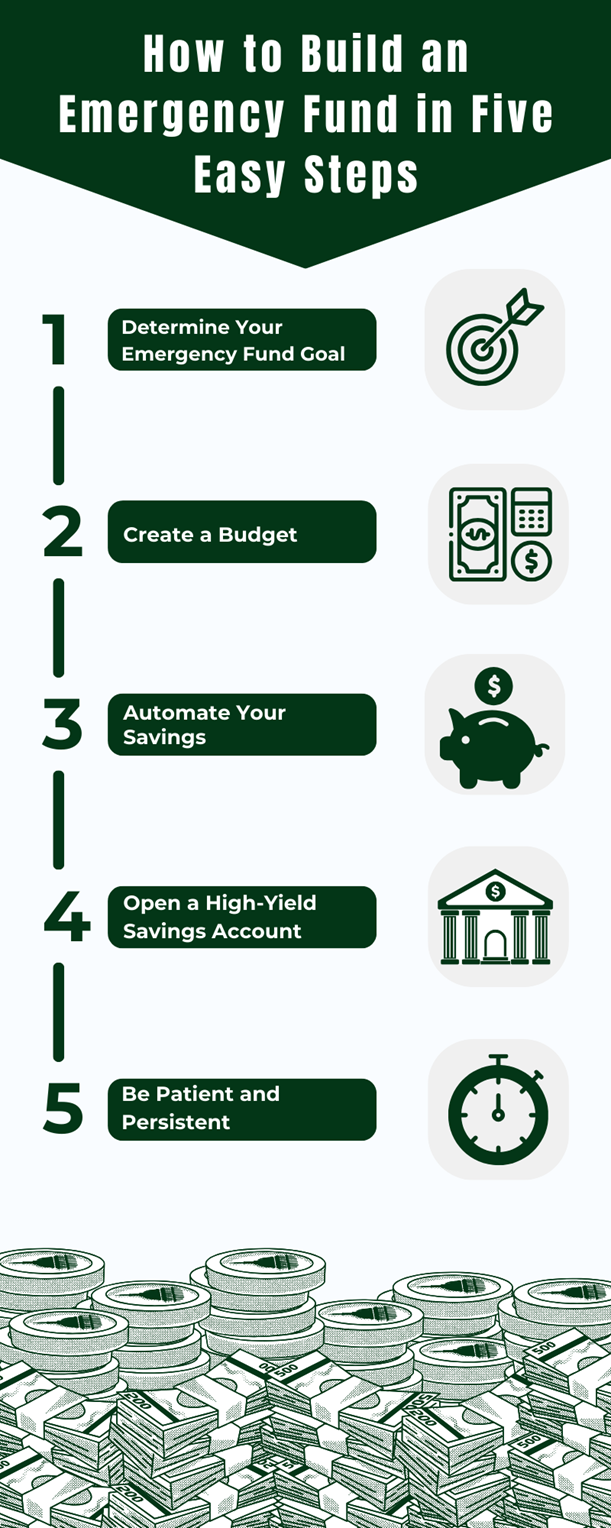Take Control of Your Finances: Build Your Emergency Fund in 5 Steps
- Natasha Ololade
- Jan 5
- 2 min read
Updated: Mar 4
Struggling to save for a rainy day? Learn how to build an emergency fund in five simple steps. Protect your financial future today!
Hey friend,
Life can throw us curveballs, right? From unexpected car repairs to job losses, having a financial safety net can be a lifesaver. That's where an emergency fund comes in. Building an emergency fund is one of the smartest financial moves you can make. It's like your own personal superhero, ready to swoop in and save the day when you need it most.
Why is an emergency fund so important?
An emergency fund is a safety net that can help you weather life's unexpected storms, whether it's a job loss, a medical emergency, or a major car repair. While it may seem daunting, building an emergency fund doesn't have to be complicated.
How to Build an Emergency Fund in Five Easy Steps

Step 1: Determine Your Emergency Fund Goal
The first step is to figure out how much you need to save. A common recommendation is to aim for three to six months' worth of living expenses. This amount should cover essentials like rent, utilities, groceries, and transportation. costs.
Step 2: Create a Budget

To save money, you need to know where your money is going. Creating a budget will help you identify areas where you can cut back and redirect those funds to your emergency fund.
Step 3: Automate Your Savings
One of the best ways to stick to your savings goals is to automate your savings. Set up automatic transfers from one account to the next. This way, you'll save money without even thinking about it.
Step 4: Open a High-Yield Savings Account

To maximize your savings, consider opening a high-yield savings account. These accounts offer higher interest rates than traditional savings accounts, so your money will grow faster.
Step 5: Be Patient and Persistent
Building an emergency fund takes time and discipline. Don't get discouraged if you don't reach your goal overnight. Keep saving consistently, and you'll eventually reach your target.
Additional Tips:
Don't touch your emergency fund for non-emergencies. Resist the urge to dip into your savings for things like vacations or new gadgets.
Keep your emergency fund accessible. Choose a savings account that allows you to withdraw your money quickly and easily.
Review your emergency fund regularly. As your income and expenses change, you may need to adjust your savings goals.
Remember, building an emergency fund takes time and discipline. But the peace of mind it provides is well worth the effort. Every little bit counts, so take the first step and set up your savings plan to secure your financial future!
Recommended Resources:
• Consumer Financial Protection Bureau: Offers tips on budgeting and saving money.
• Federal Deposit Insurance Corporation (FDIC): Provides information on savings accounts and FDIC insurance.
What are your top tips for saving money for an emergency fund? Share your best advice in the comments below!




Comments